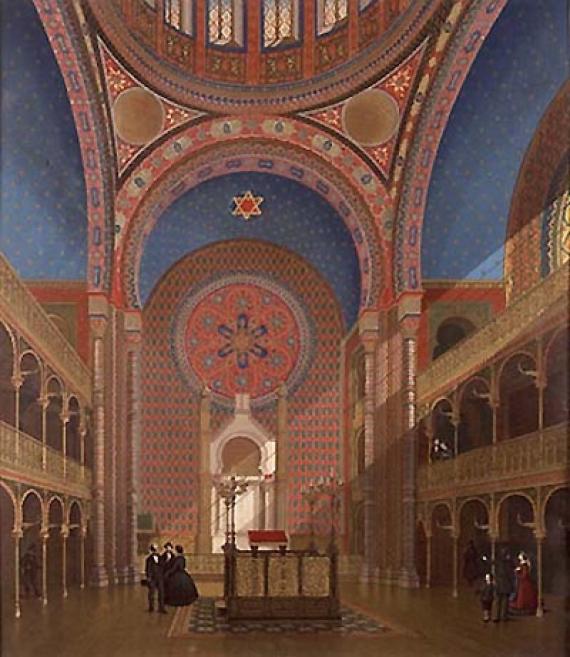Glockengasse 7
50667 Köln
Germany
After their expulsion from Cologne in 1424, Jews were not allowed to settle in the cathedral city again until 1798. After their readmission, they founded a congregation and used premises of the former Clarissan convent in Glockengasse. A steadily growing number of members led to the planning of a new place of worship, which Abraham von Oppenheim financed. The design of the new building, inaugurated in 1861, came from the Cologne cathedral architect Ernst Friedrich Zwirner.
Zwirner designed the synagogue in Moorish forms, the prevailing style for synagogues at the time. Reform as well as Orthodox communities resort to the Moorish style for their synagogues. The latter thus pursue a clear differentiation from the Christians. The Reform congregations, on the other hand, show in the use of Moorish forms their renunciation of the rebuilding of the Jerusalem Temple, which was also reconstructed in the Arabic style in the 19th century. Zwirner's building was considered one of the most beautiful synagogues of the 19th century, which also expressed the self-confidence of the Jewish community.
During the November pogrom, the building was set on fire and destroyed by the fire department's failure to intervene. The Catholic priest Gustav Meinertz saved a Torah scroll from the burning synagogue. This was returned to the Jewish community after restoration in 2007.
Nothing can be seen of the synagogue anymore - the foundations are presumably preserved under today's Offenbachplatz.
